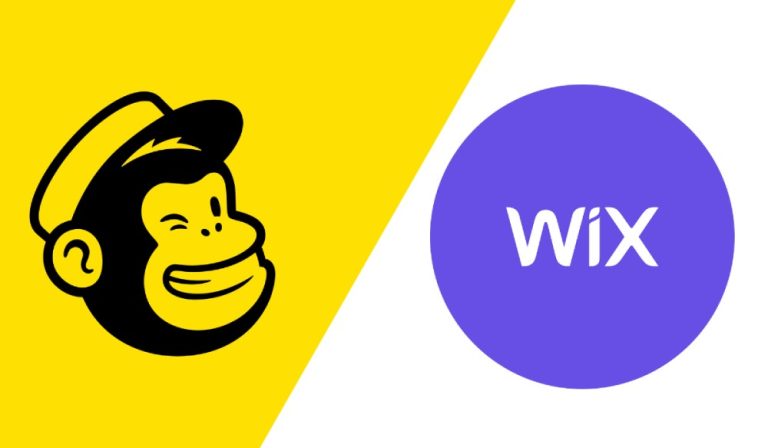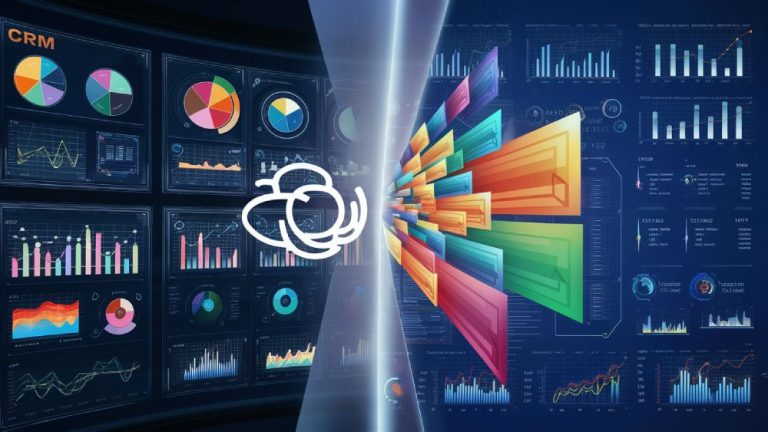How Can Email Marketing Fuel Your Overall Inbound Strategy?
Email marketing can greatly enhance your inbound strategy through strategic customer engagement and data-driven personalization. Personalized subject lines boost open rates by 26%, while segmented emails generate 58% of a company’s revenue.
Automated workflows save time and deliver timely content, enhancing the user experience and conversion rates. Integrating email marketing with CRM systems and SEO efforts helps track valuable metrics and improves efficiency.
Data-driven insights on open rates, click-through rates, and customer interactions allow targeted and effective messaging. Implementing these strategies will vastly enhance your inbound efforts and yield impressive results. Discover more impactful techniques that can elevate your strategy further.
Key Takeaways
- Personalized emails increase engagement, fostering stronger connections and improving customer loyalty.
- Segmented campaigns ensure targeted messaging, enhancing relevance and boosting conversion rates.
- Automated workflows deliver timely content, nurturing leads efficiently and saving resources.
- Email insights track audience behavior, enabling data-driven decisions to optimize strategies.
- Integrating email with SEO repurposes content, driving traffic and enhancing online presence.
Understanding Inbound Marketing
Inbound marketing, an approach that prioritizes valuable content and meaningful connections, is essential for driving sustainable growth and brand advocacy. This strategy hinges on attracting, engaging, and delighting customers through a finely tuned process. By focusing on creating content that resonates with your audience, you can build authentic connections that foster loyalty and ongoing engagement.
In executing an inbound marketing strategy, you’ll leverage tools like SEO, social media, and email to attract and retain a targeted audience. The core stages of the inbound marketing funnel—attract, convert, close, and delight—guide your efforts.
During the ‘attract’ stage, you draw in leads with compelling content, including blog posts, videos, and social media updates. The ‘convert’ stage focuses on transforming these leads into prospects by offering something valuable, like an eBook or a webinar, in exchange for their contact information.
As you move to the ‘close’ stage, your goal is to turn prospects into customers. Finally, the ‘delight’ stage guarantees ongoing satisfaction and engagement, encouraging customers to become advocates for your business.
Email Marketing’s Role
Email marketing’s role in your inbound strategy hinges on personalized engagement tactics and automation for efficiency.
By leveraging data to segment your audience and tailor content, you can enhance customer relationships and boost conversion rates.
Automation tools streamline these processes, ensuring timely, relevant communications without overwhelming your team.
Personalized Engagement Tactics
Consistently integrating personalized engagement strategies into your email campaigns can significantly enhance your open rates and revenue. By utilizing targeted emails and email personalization, you can deliver pertinent content that resonates with each segment of your audience. This approach can result in notable improvements in your metrics. For example, personalized subject lines can increase open rates by 26%, and segmented emails generate 58% of all revenue for businesses.
Data indicates that personalized engagement is crucial for establishing strong customer relationships. When you customize your emails with personalized content, you’re likely to observe an 18% rise in engagement rates. Additionally, providing relevant content can lead to an impressive 760% surge in revenue. Segmentation enables you to send tailored emails that cater to the specific needs and interests of various customer groups, further boosting engagement rates.
Here’s a brief summary:
| Metric | Improvement Rate |
|---|---|
| Increase in engagement rates | 18% |
| Enhancement in open rates (personalized subject lines) | 26% |
| Revenue generated from segmented emails | 58% of total revenue |
| Growth in revenue (relevant content) | 760% |
| Marketers reporting increased open rates | 82% |
Strategically employing these personalized engagement strategies can revolutionize your email marketing endeavors into a potent catalyst of your overall inbound strategy.
Automation and Efficiency
Leveraging the power of personalized engagement, automation, and efficiency in email marketing can further streamline processes and enhance customer experiences, leading to substantial increases in engagement and conversion rates.
By implementing email marketing automation, you save time and resources while setting up automated workflows that guarantee consistent and personalized customer experiences.
Automated workflows are critical for improving efficiency and fostering meaningful customer interactions. When you set up automated email campaigns, you can deliver timely content to relevant audience segments, which drives higher conversion rates.
This strategic approach allows for nurturing leads effectively, guiding them through the buying journey with minimal manual intervention.
Data shows that timely, relevant content is key to capturing and maintaining customer interest. Efficient automated email workflows guarantee that your audience receives the right messages at the right times, enhancing engagement.
This not only boosts conversion rates but also solidifies your overall inbound marketing strategy.
In essence, email marketing automation facilitates a seamless process where you can focus on crafting high-quality content tailored to specific segments. By leveraging automation, you’re not just saving time; you’re strategically enhancing customer interactions and ensuring every lead is nurtured through their buying journey efficiently.
Email Marketing Strategies
Crafting an effective email marketing strategy hinges on understanding the analytics behind user engagement and behavior. To maximize your overall inbound marketing efforts, take note of these vital email marketing strategies.
Personalize your emails to resonate with your target audience, ensuring each message delivers valuable content. By segmenting your audience and creating tailored email sequences, you can nurture leads more effectively.
Integrate email marketing with your CRM and other external platforms to streamline your processes and enhance the customer experience. Paying close attention to the subject line is essential, as it notably influences open rates. Data shows that emails sent on Tuesdays have the highest engagement, making it an ideal day for important campaigns.
Here are some key strategies to keep in mind:
- Personalization: Tailor emails based on user behavior and preferences.
- Segmentation: Categorize your audience into specific groups for targeted messaging.
- Automation: Implement automated email sequences to nurture leads consistently.
- Integration: Connect with CRM and other tools to enhance efficiency.
- Testing: Regularly test subject lines and email formats for peak performance.
Impact on Buying Journey
Email marketing plays a pivotal role in understanding and influencing each stage of the buying journey, from initial brand awareness to final purchase decisions. By tracking audience interactions on your website and from email campaigns, you gain essential insights into the user journey. Tools like Pathmonk Intelligence enable you to comprehend the impact of your email marketing efforts, helping you optimize your strategies effectively.
Email marketing analytics provide detailed insights into how each campaign influences these stages. By comparing your email marketing performance with other channels, you can assess the effectiveness of your strategies at each stage of the buying journey. This data-driven approach guarantees a customer-centric methodology, allowing you to refine your tactics based on real user interactions and preferences.
Pathmonk Intelligence, operating without cookies, guarantees privacy compliance while delivering accurate data. Understanding these metrics enables you to make informed decisions, ultimately enhancing your email marketing strategies and driving better results throughout the entire buying journey.
Integration With Other Strategies
Integrating email marketing with other digital strategies, such as content marketing and social media, can greatly amplify customer engagement and drive web traffic. When you align your email campaigns to address specific content marketing efforts, you create a cohesive inbound marketing strategy that boosts overall performance.
Here’s how you can strategically enhance your marketing efforts:
- Social Media: Promote your email content on your social channels to reach a broader audience and increase engagement.
- Content Marketing: Use email newsletters to share blog posts, eBooks, and other content to keep your audience informed and engaged.
- Lead Generation Tactics: Incorporate email sign-up forms across your website and social media to capture leads and nurture them through personalized campaigns.
- CRM Systems: Integrate your email marketing software with CRM systems to track interactions and tailor communications based on customer behavior.
- Personalization: Leverage data from various channels to create personalized emails that resonate with your audience.
Combining With SEO
Leveraging the synergy between email marketing and SEO can greatly enhance your digital marketing strategy by driving targeted traffic and improving search engine rankings. Repurposing email content into blog posts is a powerful tactic. By transforming successful email newsletters into keyword-rich blog posts, you provide valuable content that search engines love. This practice not only boosts your organic search visibility but also attracts more website traffic.
Content optimization is key. Take the keywords and headings from your top-performing emails and integrate them into your blog posts. This enhances your inbound strategy by making your content more discoverable in search engine results. For instance, turning detailed email content into longer blog posts exceeding 1000 words can notably increase your authority and visibility in search results.
Strategically combining email marketing with SEO amplifies your digital marketing efforts. Leveraging successful newsletter topics for engaging blog posts not only drives sustainable growth in your online presence but also attracts and retains a dedicated audience.
Enhancing Customer Engagement
To further amplify your inbound strategy, focusing on enhancing customer engagement through personalized and relevant email content is vital. By leveraging targeted messaging, you can nurture relationships with customers at various stages of their buying journey. This leads to higher levels of engagement and satisfaction.
Email marketing offers a cost-effective approach to maintaining direct communication with your audience. Integrating email marketing with CRM systems allows you to track and manage customer interactions efficiently. This data-driven approach guarantees that your messaging is both relevant and timely, maximizing its impact.
Consider these strategies to boost customer engagement:
- Segment your audience: Use CRM systems to categorize customers based on behavior, preferences, and purchase history.
- Personalize your content: Craft emails that address individual interests and needs, making your audience feel valued.
- Automate email campaigns: Use automation tools to send timely, relevant messages triggered by specific customer actions.
- Include interactive elements: Engage readers with surveys, quizzes, and personalized offers.
- Monitor and analyze: Regularly review engagement metrics to refine your strategy and improve results.
Driving Website Traffic
To drive website traffic through email marketing, focus on sharing promotional content and engaging call-to-actions (CTAs) that prompt immediate clicks. Data shows that targeted emails with compelling offers can boost click-through rates by up to 50%.
Additionally, collaborating with influencers or partners in email campaigns can amplify reach and attract more visitors.
Promotional Content Sharing
Effective promotional content sharing in email marketing campaigns can greatly drive targeted traffic to your website and boost overall engagement. By strategically utilizing email marketing, you can share tailored promotional content that resonates with your audience and encourages them to visit your site.
Here are some methods to effectively leverage this tactic:
- Promote website-specific offers and new products/services: Highlight exclusive deals or launches to entice readers to click through.
- Utilize compelling CTAs in emails: Design clear, action-oriented CTAs that guide recipients to your website.
- Announce events and webinars: Use email campaigns to inform subscribers about upcoming events, driving traffic to registration pages.
- Collaborate with influencers or partners: Sharing influencer content can amplify your reach and attract their followers to your site.
- Share engaging content: Offer valuable insights, articles, or resources that draw readers to your website for more information.
Data shows that targeted promotional content in email marketing can significantly enhance website traffic and overall engagement. By focusing on compelling CTAs and collaborating with influencers, you ensure that your email campaigns aren’t just opened but also acted upon, thereby driving traffic and increasing user interaction on your website.
Engaging Call-to-Actions
Incorporating persuasive call-to-actions (CTAs) in your emails strategically drives website traffic and boosts user engagement. By using clear and enticing CTAs, you can guide recipients to your website, increasing the chances of conversions.
Data shows that well-crafted CTAs can notably impact click-through rates, leading to higher engagement from your audience.
To maximize these benefits, it’s vital to use CTAs to promote specific offers, products, or content. Directing your email recipients to relevant landing pages not only enhances user interaction but also increases the likelihood of conversions. A targeted approach ensures that each CTA aligns with the recipient’s interests, making the interaction more personalized and effective.
Moreover, analyzing the performance of your CTAs is important. Track metrics like click-through rates to identify which CTAs are most persuasive. This data-driven approach allows you to refine your strategies, optimizing future campaigns for even better results.
Collaborative Campaigns
Partnering with influencers or complementary businesses in collaborative email campaigns can strategically drive significant website traffic. By aligning with the right partners, you can tap into their audience base to boost website visits and expose your brand to new audiences. These collaborations not only promote specific offers, products, or events but also leverage the trust and credibility of your partners.
To maximize the impact of your collaborative campaigns, consider these strategies:
- Partner with influencers: Utilize their established trust to introduce your brand to new audiences.
- Use compelling CTAs: Direct recipients to your website with clear, action-oriented messages.
- Promote products or events: Highlight specific offers to generate interest and drive website traffic.
- Coordinate email campaigns: Synchronize your efforts with partners to guarantee a cohesive message.
- Generate interest and curiosity: Craft emails that intrigue recipients, prompting them to visit your website for more information.
Frequently Asked Questions
Can Email Marketing Fuel Your Overall Inbound Strategy?
Yes, email marketing can fuel your overall inbound strategy. With 3.9 billion users, it enables personalized engagement, integrates seamlessly with CRM, and is cost-effective, enhancing customer relationships and showcasing offerings through targeted, relevant content.
What Are the Benefits of Inbound Email Marketing?
You’ll find inbound email marketing a treasure trove of benefits. It boasts a 3.9 billion user base, ideal engagement on Tuesdays, cost-efficiency, and precise targeting, all enhancing your customer relationships and overall marketing effectiveness strategically.
Is Email Marketing Inbound Marketing?
Yes, email marketing is a form of inbound marketing. You attract, engage, and delight customers with personalized content aligning with inbound principles. This approach nurtures leads, builds relationships, and drives conversions, reinforcing trust and loyalty.
Which of the Following Is a Benefit of Using Email as an Inbound Marketing Strategy?
Imagine your audience eagerly opening your emails daily; it’s a direct line to their attention. Email marketing’s benefit lies in its high engagement rates and ROI, ensuring your messages are noticed and drive significant results.
Nurture Long-Term Relationships with a Cohesive Marketing Approach
Incorporating email marketing into your inbound strategy can boost results notably. Did you know that email marketing has an ROI of 4400%?
By strategically crafting personalized emails, you’ll guide potential customers through their buying journey, enhance engagement, and drive more traffic to your website.
Integrate it seamlessly with SEO and other marketing strategies to create a cohesive approach that maximizes impact and nurtures long-term relationships with your audience.
Start leveraging email marketing today for measurable, data-driven success.







